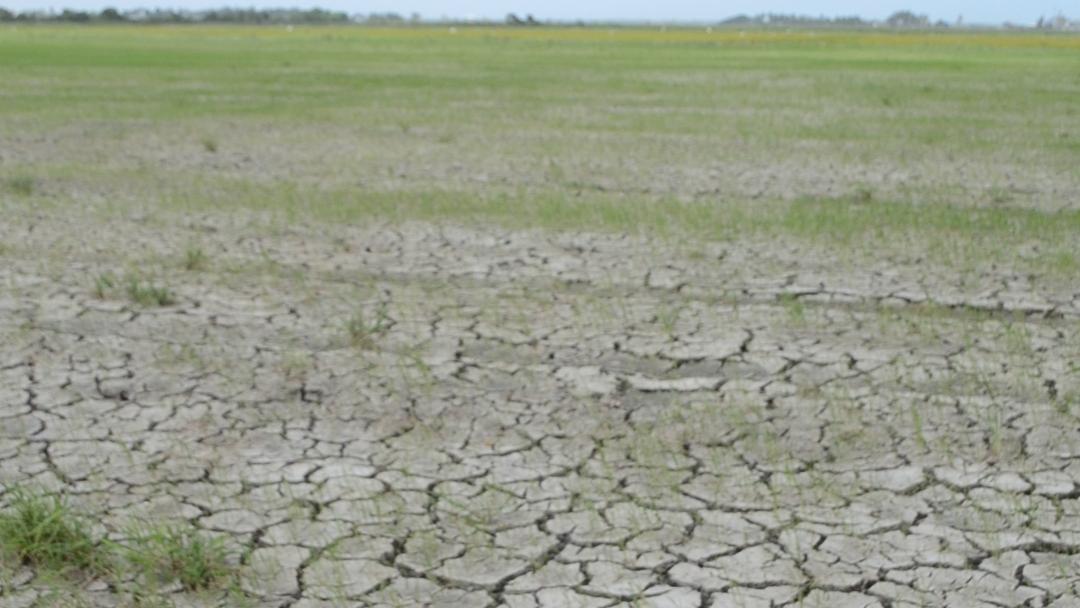Home News Hydromet Office urges conservation of water
Dry season ahead
As the dry season continues to prevail over most parts of Guyana, the Hydrometeorological Office of Guyana has advised that water be conserved during the months of March, April and May (MAM), as less-than-usual rainfall is expected.
On its website, the weather department said, “All Regions can expect less rainfall than the usual amounts for the MAM season. The transition into wet season is likely to be less wet than usual; however, there are still chances for short, high- intensity downpours”.
In this regard, the organisation has urged that citizens conserve water over this period.
According to the Hydromet Office, “Reduced long-term flooding potential and slow recharge rates of large water reservoirs can be expected”.
In addition it cautioned that large scale agriculturists who are dependent on rainfall may have to irrigate in some cases.
In a much more detailed section of its forecast, the Hydromet Office noted that during the first half of MAM, northern Guyana is usually dry, and later transitions into the primary wet season, while southern Guyana continues to be dry until the rains in mid-April.
These conditions, it said, repeat each year, unless they are being influenced by El Niño, when drier conditions prevail; or by La Niña, when wetter conditions prevail.
During the MAM period, most of the rainfall will occur in Regions Three (Essequibo Islands – West Demerara), Seven (Cuyuni-Mazaruni), Eight (Potaro– Sipurun) and northern 10 (Upper Demerara–Berbice). 
“The forecast suggests that there are still chances for downpours which can lead to flooding, but with low possibilities,” the weather department warned.
Temperatures for this period in Region Four (Demerara-Mahaica) are expected to be warmer than usual in the day and night, while cooler days and warmer nights can be expected for Region (Six East Berbice-Corentyne) for this season.
According to the Hydromet Office, the current forecast indicates little concern for drier conditions in northern Guyana; however, the forecasted rains can reduce the impact.
In regard to rainfall, it was outlined that Regions One (Barima-Waini) to Four, Nine (Upper Takutu–Upper Essequibo) and northen 10 can expect less rain than usual for March.
Regions Five (Mahaica-Berbice), northern Six and Eight and southern 7 can expect a wetter- than-usual March.
Reliable rains for agriculture are likely, but slower increase in surface wetness for Regions Five, northern Six, Eight and southern Seven can be expected.
For the months of November and December, 2018 and January 2019, the average total rainfall reached 332mm. It was recorded across Guyana and was below the climatological average of 556mm.
“The highest rainfall total (680.2mm) for the period was recorded at Hog Island, Region 3. Most of the rain was experienced in Regions 7 and 10, which resulted in very wet surfaces. More than 90 per cent of stations recorded rainfall below their climatological averages,” Hydromet reported.
Rice farmers in Region Three told Guyana Times that they have been hopeful for rainfall, but the clouds would usually get dark and only drizzle on their fields. One farmer, Ganga Persaud, told this publication that the farmers at Hague, West Coast Demerara have for the longest while been using irrigation methods to get water to their plants.
Earlier this year, about 300 acres of rice were lost in Region Six, East Berbice, as a result of the prevailing dry conditions and lack of water, while a further 500 acres were under threat.
Initially the Hydromet Office had predicted normal rainfall by April.
